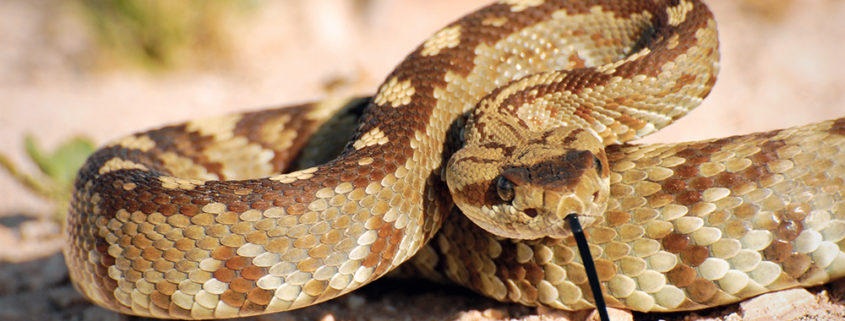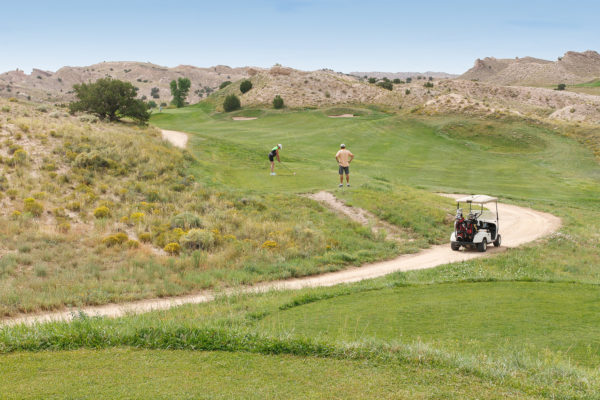An award-winning golf course located on tribal land in the high desert of New Mexico was sued by a husband and wife when the wife was bitten by a rattlesnake. The incident occurred while searching for a lost golf ball. The woman was rushed to the hospital where she received emergency treatment and survived. The couple sued the golf course for her injury, medical expenses, suffering, and past and future loss of earnings. They alleged the golf course was negligent for the dangerous conditions and failed to warn players of the danger from rattlesnakes.
Groundskeepers hunted and found the snake. The Superintendent killed it and presented the rattle to the victim while she was in the emergency room.
Golf course architect Michael S. Johnstone, AIA, was retained as expert witness in the case. The firm investigated the complaint, researched the history of the golf course, interviewed golf course staff, and conducted a site inspection to assess overall conditions. The firm found that 140,000 rounds were played at the golf course, or about 15,000 rounds per year. This included youth, amateur and college tournaments, plus golfing tourists from around the world. No snake bites were previously reported. Furthermore, the golf course had received many industry awards and was named among the best public courses in the US and state by numerous golf and travel magazines.
The investigation learned that the plaintiffs played at the golf course many times and took lessons there. They also lived nearby and operated two businesses, one of which led big game hunting expeditions in New Mexico. Yet, the couple testified they did not know rattlesnakes existed in New Mexico.
Environmental research and photographs were used to document the golf course, the natural habitat, and indigenous wildlife in the region. The firm reported that New Mexico ranks as the fourth highest state in bio-diversity and the third highest in diversity among mammals and reptiles. Public information for residents and homeowners about rattlesnakes was cited from the State of New Mexico and U.S. Department of Agriculture. Notably, snakes have been celebrated in the Native American art and culture of New Mexico for centuries. Even school children are routinely educated about the wildlife of New Mexico, including rattlesnakes.
The plaintiffs passed at least three warning signs labeled “RATTLESNAKE HABITAT”. The signs were located along the cart path and native wild areas. Nonetheless, the plaintiffs testified they did not notice them that day or on any prior occasion.
The investigation also found the husband hit two bad tee shots into the native terrain. It was his second errant ball the couple was searching for when the wife was bitten. They both hiked about 30 yards off the fairway, up an elevated rocky slope, through desert brush and natural signs of wildlife, when the rattlesnake bit the woman on her ankle.
As expert witness, Michael Johnstone enumerated standards of care for both players and the golf course. He cited USGA Rules for Ball Lost or Out of Bounds that included options for relief, and specific rules pertaining to Animals Interfering with Play, Status of Snake, and Dangerous Situation; Rattlesnake or Bees. He emphasized players must make fundamental choices about the environment and safety at all times. He also demonstrated that USGA rules include wildlife as an inherent part of the sport. Attorneys for the golf course did not expect such a thorough assessment of the incident and were very happy with the settlement achieved.



